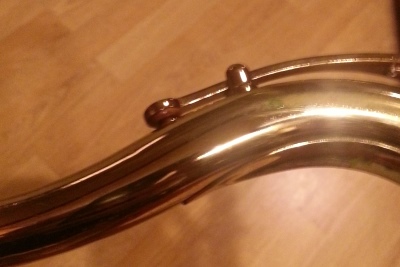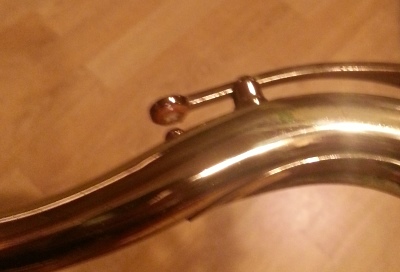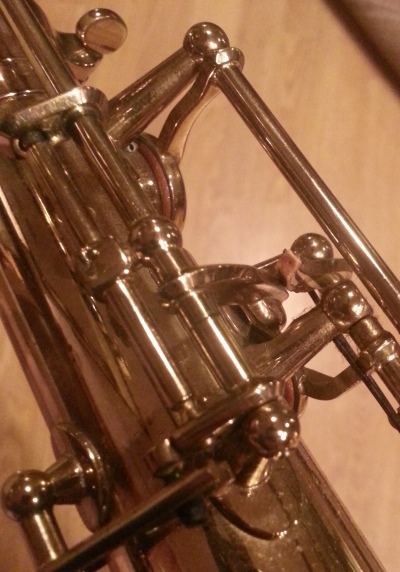I’ve played saxophone since I was in high school, and I thought I knew how saxophones work, but I learned something new this evening. I was listening to a podcast [1] on musical acoustics and much of it was old hat. Then the host said that a saxophone has two octave holes. Really?! I only thought there was only one.
When you press the octave key on the back of a saxophone with your left thumb, the pitch goes up an octave. Sometimes this causes a key on the neck to open up and sometimes it doesn’t [2]. I knew that much.


I thought that when this key didn’t open, the octaves work like they do on a flute: no mechanical change to the instrument, but a change in the way you play. And to some extent this is right: You can make the pitch go up an octave without using the octave key. However, when the octave key is pressed there is a second hole that opens up when the more visible one on the neck closes.

According to the podcast, the first saxophones had two octave keys to operate with your thumb. You had to choose the correct octave key for the note you’re playing. Modern saxophones work the same as early saxophones except there is only one octave key controlling two octave holes.
* * *
[1] Musical Acoustics from The University of Edinburgh, iTunes U.
[2] On the notes written middle C up to A flat, the octave key raises the little hole I wasn’t aware of. For higher notes the octave key raises the octave hole on the neck.

Are you familiar with the key flicking on the bassoon? http://bassoondoctor.blogspot.com/2013/03/flick-that-bassoon.html
These effectively represent three octave keys on the bassoon, in addition to the standard anti-octave key, the whisper key, which you press to close the top vent and play notes in the bottom octave and a half.
Sol, that sounds really complicated! I remember sitting behind a bassoon one time and thinking his thumbs would have to hurt by the end of the concert. We were playing a march that gave his left thumb a real workout.
I don’t know much about double reeds. At one point I thought I’d pick up oboe, but I gave up a few weeks later.
John,
I’m a newbie soprano sax player — there are two holes that operate when one pushes the octave key ; one opens — the one on “the neck” — the other closes (down, lower on the instrument). Perhaps what you have described occurs only on the tenor and other lower register saxophones ? And, perhaps the construction is different depending which tenor you play ?
Dan
It works the same on soprano and tenor saxophones, at least on mine.
It works the same one Baritone, Tenor, Alto, and I’m pretty sure Soprano sax as well. I never had a chance to play a Bass or Contra Bass, but I’m pretty sure they are the same. If you hold down the octave key and and work the left-hand keys, one of those (forget which one) will toggle which octave hole is open.
I never knew about two octave keys on older instruments, that certainly would have added some challenge.
So, my second octave hole doesn’t open completely..
What do I do?